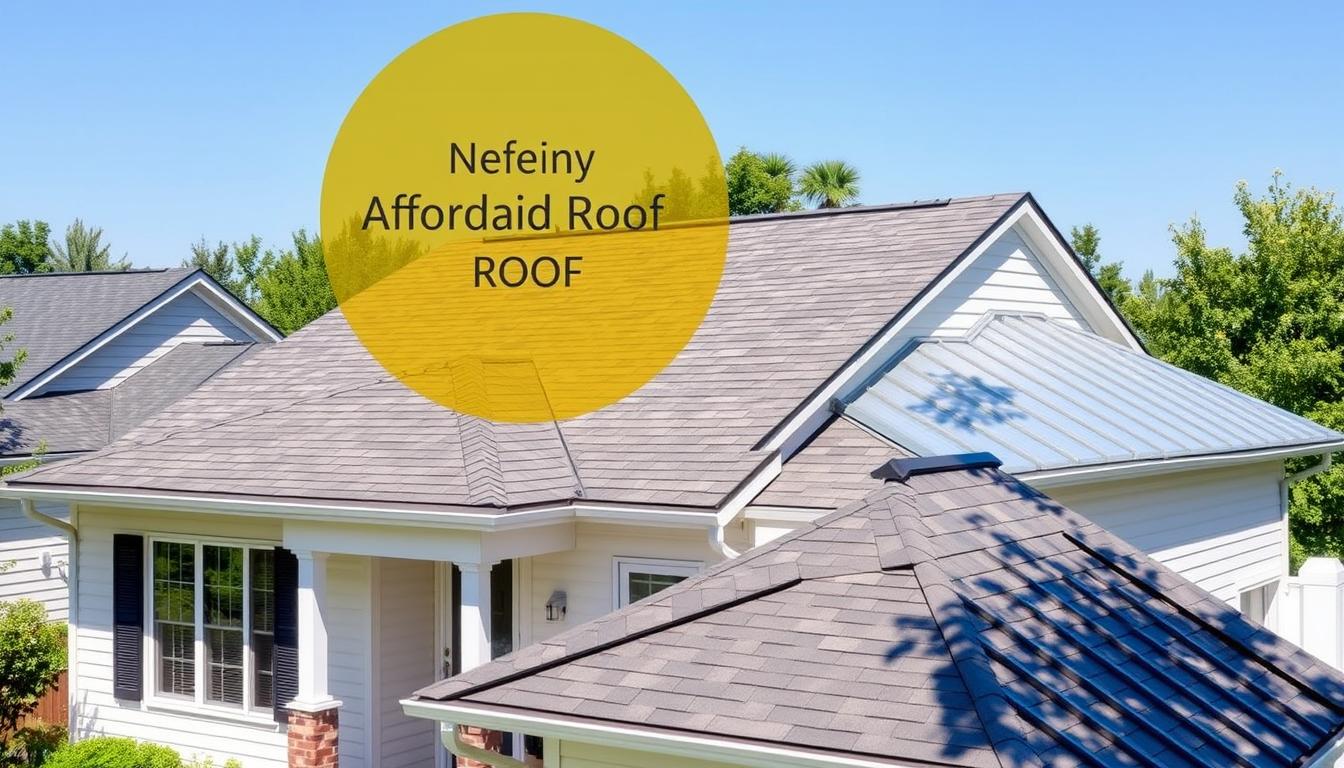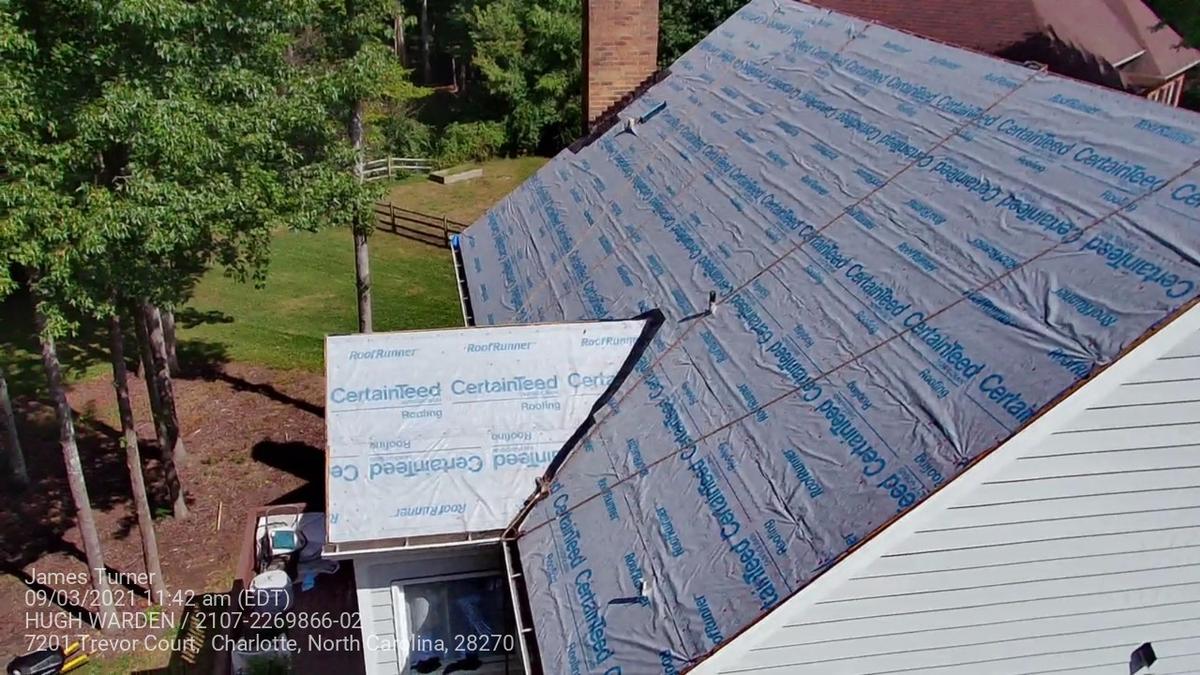Why Bad Weather Should Prompt a Roof Check-Up for Leaks
Have you noticed water leaking from ceiling after a storm? Heavy weather can send liquid onto your roof, causing roofleaks and damage that might lead to roof replacement if not addressed promptly. This post reviews how rain, snow, and ice affect your roof, the warning signs of leaks, and what to expect during a roof check-up. Homeowners will find clear steps to prevent further damage and avoid costly repairs to cement structures.
Bad Weather Increases the Risk of Roof Leaks
Stormy weather puts stress on roofing materials and exposes flaws that can allow rain to penetrate the structure. A broken skylight can further compromise the seal, increasing the chance of water entry.
Strong winds force rain to gather near vulnerable points, acting as a dam that boosts water pressure. These conditions often prompt property owners to seek emergency roof repairs to halt further intrusion.
Moisture can seep into the building and damage the drywall, weakening the interior. This intrusion signals that the roof needs a thorough inspection.
Unchecked leaks tend to worsen roofwater damage and result in rising repair expenses. Homeowners notice that timely maintenance helps prevent costly consequences from persistent moisture.
Understanding the Impact of Rain, Snow, and Ice on Roof Integrity
Heavy rain erodes roofpaint and undermines metal structures, increasing leak risks. Snow, ice, and hail accumulate to strain the roof system, while strong winds push water into weak points. Homeowners often check their insurance and use an email address for repair updates, ensuring ongoing protection against weather-induced damage.
How Heavy Rainfall Can Lead to Roof Vulnerabilities
Heavy rainfall stresses roofing materials and often results in a ceilingleak from rain that opens the door for mildew growth. When debris accumulates on the surface and stray ice forms on vulnerable sections, water infiltration increases and weakens the overall structure.
Independent inspections reveal that continuous exposure to heavy rain forces water into small gaps, causing early signs of interior damage. Local repair services offering 24 hour emergency roof repair near me respond quickly to fix issues and prevent further deterioration.
The Dangers of Accumulated Snow and Ice on Roof Surfaces
Accumulated snow and ice on roof surfaces exert excess pressure that can weaken tiles and leads to a damaged roof when neglected. This added stress may allow water to enter the attic, prompting property owners to prioritize home improvement tasks and review their repair policy.
Cold weather conditions form thick layers of ice that stress the roof system and cause vulnerabilities over time. Maintenance experts often use a cart to transport supplies and debris during repairs, ensuring that early issues receive proper attention and aligning work with a solid repair policy.
Wind Damage: How Strong Winds Affect Roof Structures
Strong winds force water into roof seams, often causing an emergency roof leak that can damage the ceiling. Roofers observe that increased wind pressure compromises the roof seal, leading homeowners to schedule prompt inspections to prevent further water intrusion.
Gusts dislodge shingles and weaken flashings, allowing water to penetrate vulnerable areas and create an emergency roof leak affecting the ceiling. A skilled roofer evaluates these issues and advises homeowners on timely repair measures to avoid extensive interior damage.
Signs of a Potential Roof Leak After Stormy Weather
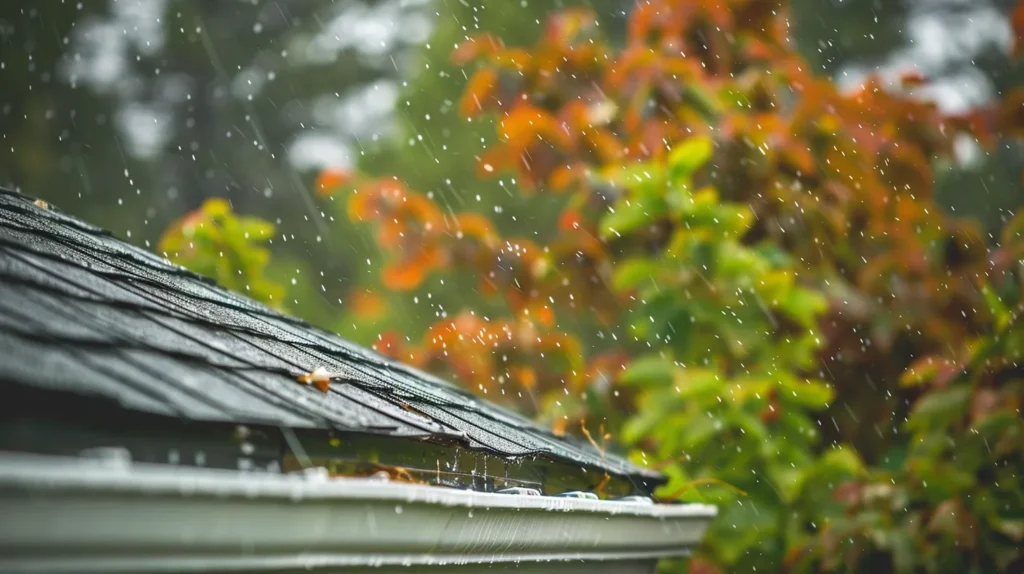
After a storm, visible water stains on ceilings and walls indicate trouble. A close check for missing or damaged shingles and compromised roofflashing or sealant reveals how moisture may enter. Whether a condominium or home with plumbing concerns, identifying these issues guides timely roofleak repair to prevent further interior damage.
Visible Water Stains on Ceilings and Walls Indicate Trouble
Visible water stains on ceilings and walls provide early warning signs that indicate water may have begun seeping through the roof, leaving behind subtle leaks. A professional inspection often uncovers that deteriorated flashing is letting water pass through, eventually affecting the floor.
Experienced contractors advise that noticing such signs should prompt immediate action, and property owners frequently search for emergency roof repair near me in response. A certified specialist will perform a thorough inspection, repair any faulty flashing, and help prevent leaks from causing further damage to the floor and surrounding areas.
Checking for Damaged or Missing Shingles Post-Storm
After extreme weather events, experts advise a thorough roof check for damaged or missing shingles to prevent water leaking from ceiling when it rains. This early inspection protects the wood structure and key indoor areas such as the kitchen, which may help preserve a homeowner’s insurance cover.
Technicians observe that missing shingles can create vulnerabilities that allow water to seep into the interior, affecting both wood supports and the kitchen area. Timely inspections reduce the risk of leaks during extreme weather, ensuring that the roof maintains its integrity and supports a solid homeowner’s insurance cover.
Examining Roof Flashing and Seals for Compromise
Following severe weather, inspecting roofflashing and seals allows professionals to identify minor breaches that may lead to a leak. Roofing experts note that swift flashing repair can prevent the need for extensive ceiling leak repair and help maintain favorable home insurance terms.
Experienced inspectors recommend reviewing all sealant areas after storms, as even small damage can compromise roofing integrity. Early detection through a detailed check supports prompt flashing repair and minimizes risks associated with leaks, ultimately reducing potential home insurance claims.
The Importance of Conducting a Roof Check-Up Following Severe Weather
Regular roof maintenance helps spot worn coating, signs of water in the ceiling, branches from a nearby tree, and developing icedam problems. Establishing a routine inspection schedule and knowing when to call professional roofing services prevent further damage. Proactive care stops minor issues before they become costly leaks.
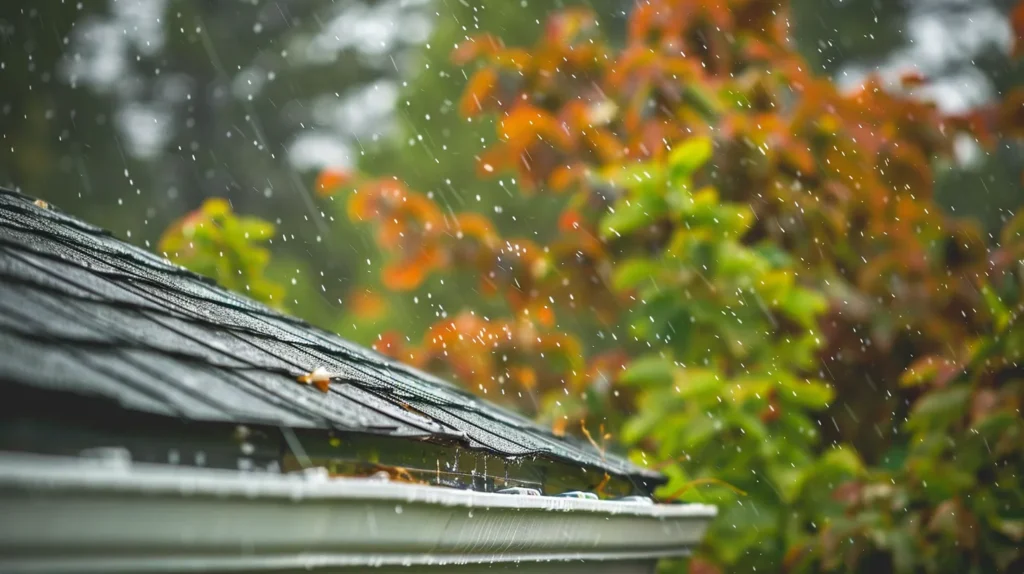
Establishing a Routine Roof Inspection Schedule
A routine roofinspection schedule enables maintenance teams to pinpoint signs of weakened adhesion and detect small structural faults that may allow a roofleak to form. This proactive step permits professionals to fix roof issues promptly, preventing water damage from escalating.
Regular assessments of the roof offer valuable insights into emerging damage and highlight areas where materials lose proper adhesion. Early intervention allows experts to fix roof problems before minor leaks develop into significant water damage.
Knowing When to Call Professional Roofing Services
After severe weather events, property owners may observe water stains and wear in building insulation that signal a need for professional evaluation, often prompting a search for “ceiling leak repair near me.” A reliable roofing company can assess the damage and provide a clear estimate of the ceiling leak repair cost, especially when snow or heavy rain has taken its toll on the roof.
Expert roofers inspect vulnerable areas with precision to prevent minor issues from worsening into more significant problems. Their timely intervention safeguards building insulation and helps control potential ceiling leak repair cost, ensuring that damage from snow and adverse weather does not escalate.
The Benefits of Proactive Maintenance to Prevent Leaks
Routine roof inspections allow professionals to identify early wear that might contribute to a leaking roof. By examining areas near the chimney and evaluating components related to electricity affected by wind, experts secure the roof’s warranty and reduce repair costs.
Timely evaluations enable technicians to address minor damage before severe weather worsens the condition. Experts reinforce vulnerable sections to ensure that both electricity systems and chimney integrity remain secure while maintaining warranty coverage under challenging wind conditions.
What to Expect During a Roof Check-Up
This section details the process of checking a roof following rain and storms. It covers assessing the roof from the ground and ladder, using tools to identify a ceilingleak or detect water on carpet, mold buildup, and waterproofing issues, while outlining repair options for any problems found.
Assessing Roof Condition From the Ground and Ladder
Assessing the roof from the ground begins with a clear view of any external damage, such as crumbling shingles or rust on a metal roof that might prompt immediate roof repair. Local experts often organize follow-up inspections based on the property’s zip code to ensure that emerging issues receive proper attention.
Using a ladder allows for a closer inspection of hard-to-see areas, including regions around flashings and seams. This method helps professionals identify problems that may affect electrical wiring and cause water intrusion, which in turn can damage interior furniture if left unaddressed.
Tools and Techniques Used by Professionals to Identify Leaks
Trained technicians use infrared cameras and moisture sensors to uncover hidden signs of leaking that may not be visible from the surface. They monitor condensation levels and inspect areas around fiberglass components to identify vulnerabilities that could lead to water damage.
Experts apply dye and water testing techniques to validate suspected issues before proceeding with repairs. They rely on practical data to determine the most effective way to fix a roof, ensuring that minor problems are addressed before becoming significant repair challenges.
Understanding Repair Options for Detected Issues
During a roof check-up, a professional inspector surveys roofing components to identify any minor or hidden damage linked to weather exposure. The specialist determines repair options by recommending targeted patching or seal replacement that directly address the issues discovered.
Repair methods vary based on the extent of the damage and overall roof condition. The technician explains each available approach clearly, ensuring property owners understand how these measures help prevent recurring leaks and avoid rising repair costs.
Documenting Roof Condition for Insurance Purposes
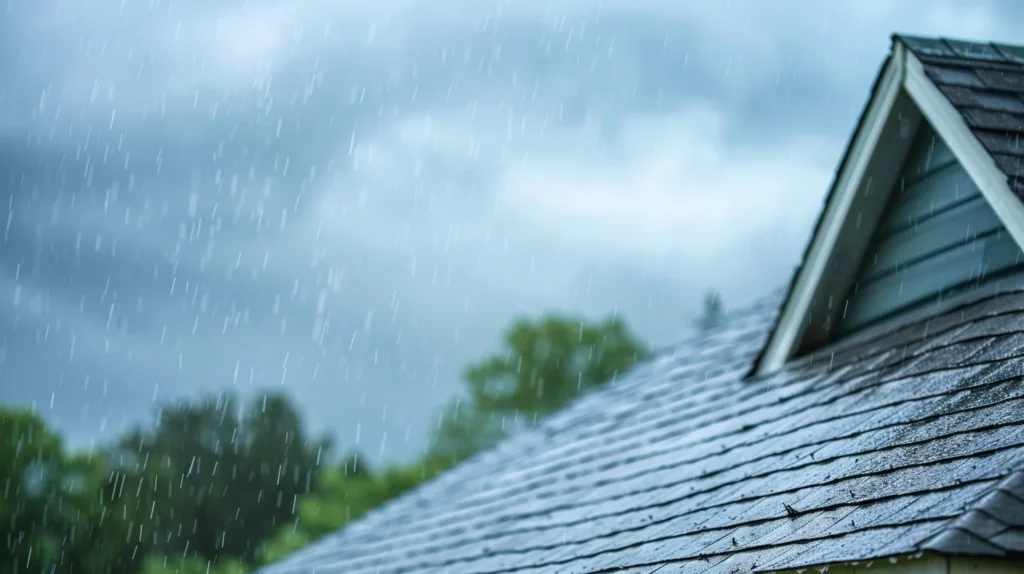
This section explains how property owners use photographs to support claims processing and why keeping detailed roofinspection and repair records matters. It offers practical insights for documenting roof condition and ensuring that insurers receive clear information following severe weather events.
The Role of Photographs in Claims Processing
Photographs provide clear evidence of weather-related roof damage that assists insurance adjusters during claims processing. They capture damage such as roofleaks, displaced shingles, and water stains, enabling professionals to quickly assess the situation and verify repair needs.
Maintaining an updated visual record of roof condition helps streamline evaluation during claim reviews. Experts advise homeowners to document any changes after storms, ensuring that accurate images support their claims and facilitate prompt repair assessments.
Keeping Accurate Records of Roof Inspections and Repairs
Accurate records of roof inspections and repairs provide clear evidence of a property’s condition after severe weather events. Detailed documentation that includes photographs and written observations makes it easier for homeowners to support insurance claims and clarify the repair history to adjusters.
Experienced professionals recommend that property owners maintain comprehensive logs of previous repairs and routine inspections. These records not only assist in verifying the timeline of damage and maintenance but also help establish credibility during discussions with insurance representatives.
Related Resources for Homeowners on Roof Maintenance
Essential tips to prevent future roof issues, insight on local roofing companies offering quality services, and community resources for weather-related repairs offer useful support for homeowners. This overview provides quick guidance for securing effective maintenance and protecting property after bad weather.
Essential Tips for Homeowners to Prevent Future Roof Issues
Regular roof check-ups allow property owners to catch signs of material wear before major damage occurs. Certified inspectors examine roof shingles and seals using effective methods to detect small issues that may lead to roofleaks.
Routine maintenance schedules help preserve roof integrity and keep repair expenses low. Service professionals use reliable techniques to review roof condition and address compromised sections before weather damage worsens.
Exploring Local Roofing Companies for Quality Services
Local roofing companies with extensive field experience offer reliable roof check-ups after severe weather. These professionals use modern techniques and effective tools to assess damage and suggest repair options that secure the roof‘s durability.
Certified contractors in the area schedule prompt roof inspections to detect early signs of leakage before issues worsen. Their practical approach and clear repair strategies provide homeowners with cost-efficient solutions that help maintain a strong roof over the property.
Community Resources for Weather-Related Home Repair Guidance
Local community centers and municipal agencies step in to offer hands-on guidance for residents facing weather-related home repair challenges. They provide updated information on roof check-ups and practical repair techniques that support homeowners in managing damage after storms.
Neighborhood initiatives and public outreach programs also supply clear, actionable repair tips to address concerns such as roof sealing and leak prevention. These resources equip property owners with the necessary insights to address weather-induced damages efficiently and keep their homes secure.
Conclusion
Severe weather weakens roof materials and creates openings for water to cause damage. Storm conditions expose loose shingles and failing flashings that demand swift inspection. Routine check-ups help homeowners spot early signs of deterioration and perform needed repairs. Acting promptly controls repair expenses and preserves the building’s overall strength.


